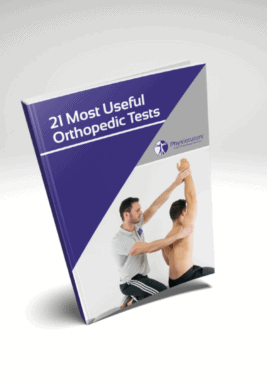Learn
Tinel Sign for TOS | Thoracic Outlet Syndrome Assessment
Thoracic Outlet Syndrome is defined as a neurovascular symptom complex associated with compression of the brachial bundle, which includes the brachial plexus and/or subclavian vessels. This compression may be caused by several anatomical structures in one or more of the following three compartments: the interscalene triangle, the costoclavicular space or retropectoralis minor space.
This maneuver exerts direct stress on the mechanosensitive brachial plexus. According to Gillard et al. in 2001 it has a sensitivity of 46% and specificity of 56%, Regarding the very low accuracy the clinical value of this test is rather weak.
To elicit the Tinel Signs have your patient sit upright with the arms at the side of his body. The examiner taps the supraclavicular fossa with a reflex hammer or index and middle fingers.
This test is positive if the patient reports tenderness or if the patient’s familiar symptoms are reproduced.
Be aware that it is unlikely that this test is able to distinguish between patients with cervical radiculopathy and TOS as this test is probably positive in both conditions.
21 OF THE MOST USEFUL ORTHOPAEDIC TESTS IN CLINICAL PRACTICE

Other common tests to assess for TOS are:
- Costoclavicular / Halstead Maneuver
- Morley / Brachial Plexus Compression Test
- Eden / Miliatry Brace Test
- Roos Test / Elevated Arm Stress Test
- Cyriax Release Test
- Adson Test
- Wright’s Test
Like what you’re learning?
BUY THE FULL PHYSIOTUTORS ASSESSMENT BOOK
- 600+ Pages e-Book
- Interactive Content (Direct Video Demonstration, PubMed articles)
- Statistical Values for all Special Tests from the latest research
- Available in 🇬🇧 🇩🇪 🇫🇷 🇪🇸 🇮🇹 🇵🇹 🇹🇷
- And much more!








